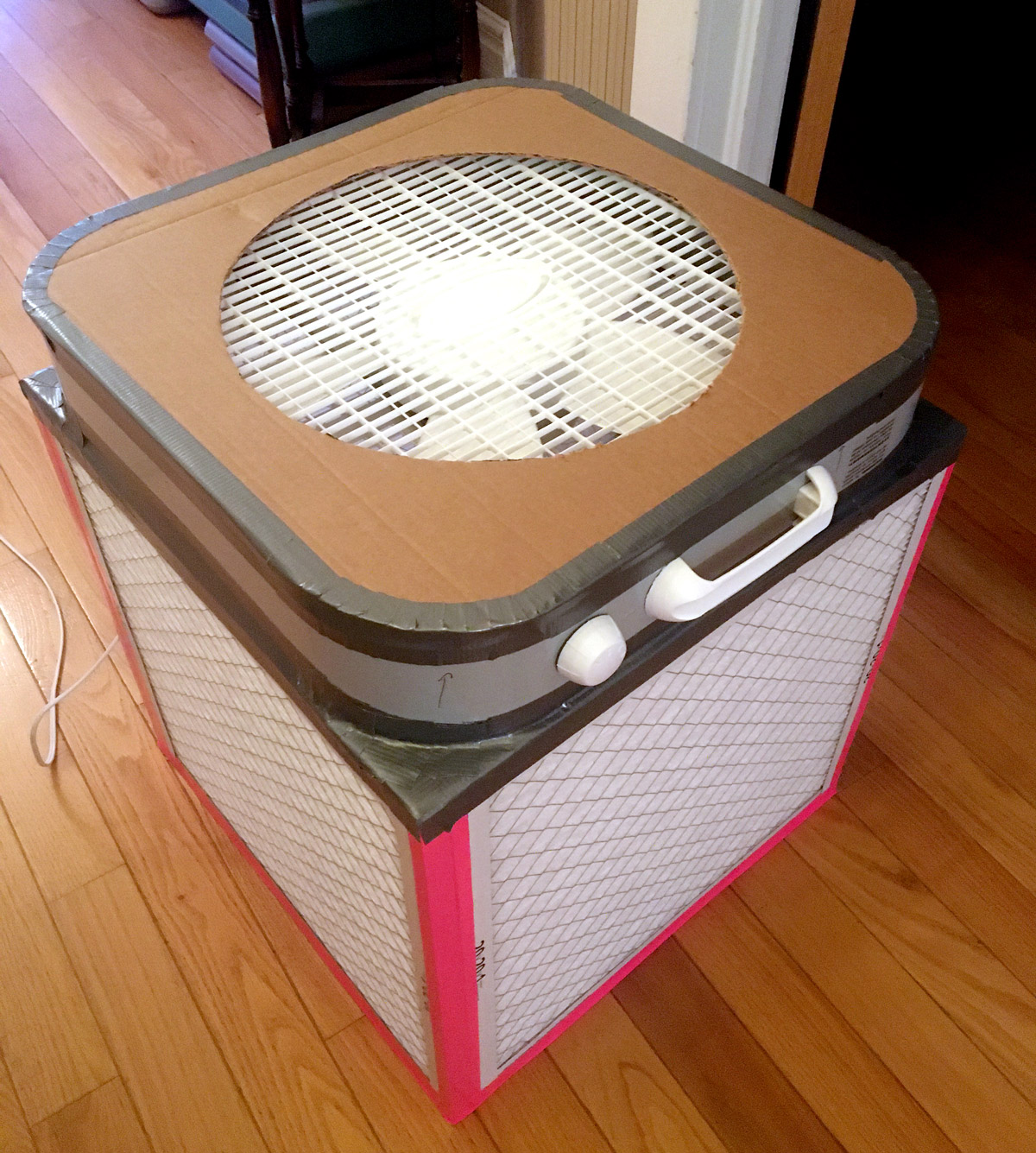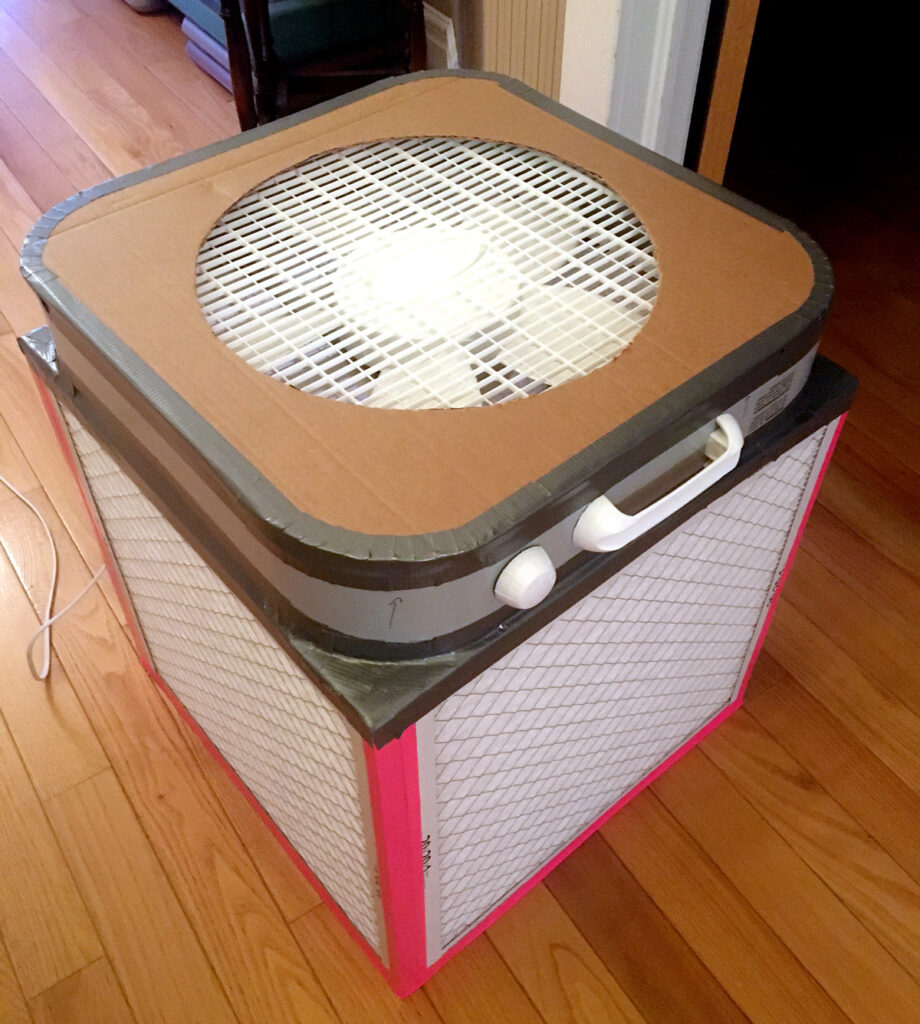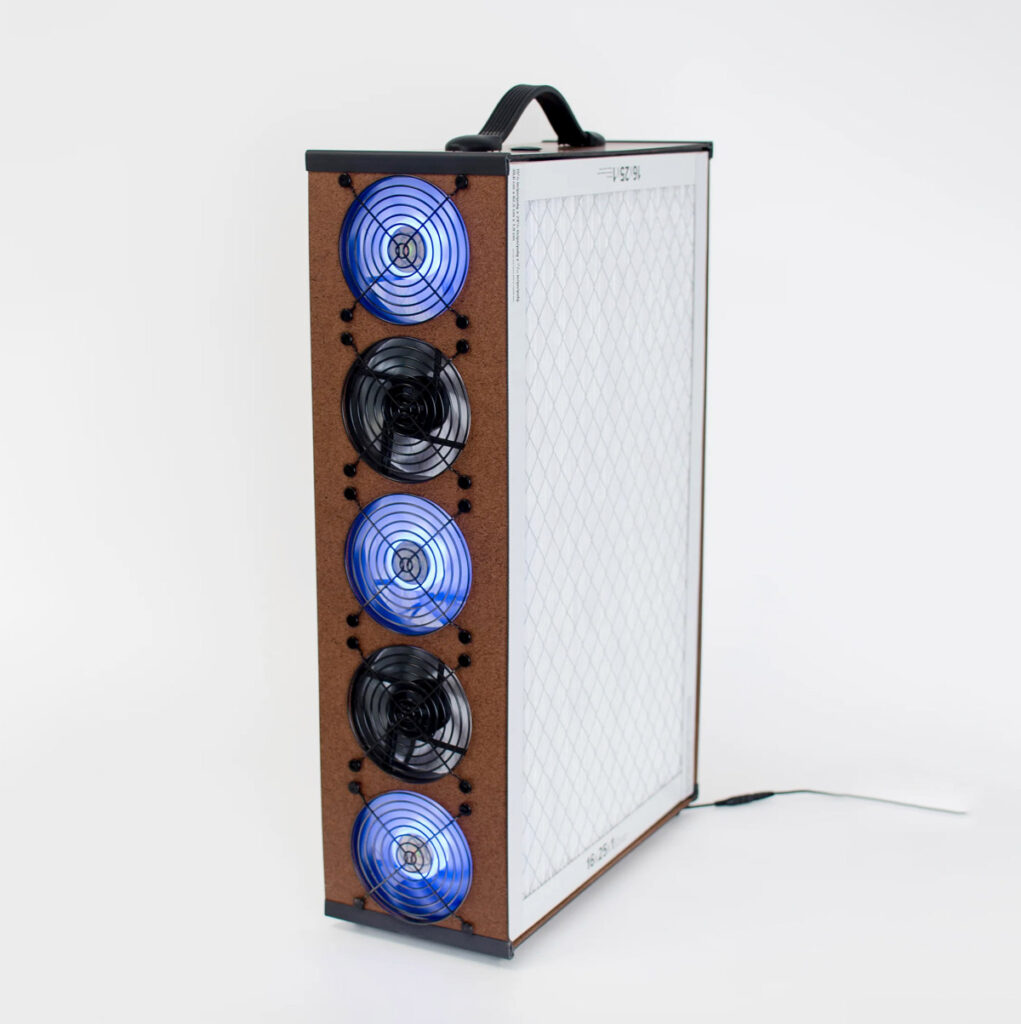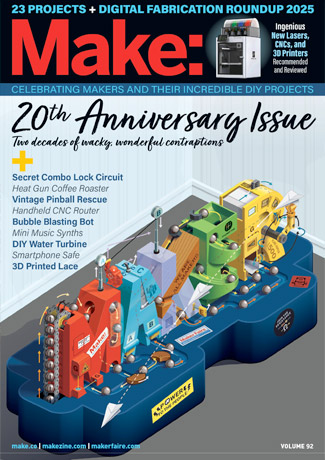Removing infectious aerosols and wildfire smoke particles from indoor air has been a DIY, community-led project since August 2020, when Dr. Richard Corsi and Jim Rosenthal designed the Corsi-Rosenthal Cube. Now colloquially known as a Corsi box, these DIY air purifiers have been adapted by indoor air quality (IAQ) experts and validated as an effective air cleaning method by several peer-reviewed studies. They’re easy to make and they work better than some commercial units!
The robust performance of Corsi boxes is largely due to the electrostatic charge (which attracts particles) and large surface area (pleated/accordioned into a compact size) of ordinary MERV-13 filters you can buy at any hardware store.
Over the past three years, Corsi boxes have enjoyed major community uptake and an open source design evolution largely documented on Twitter (now X). These DIY designs have been accompanied by community CO2 measurement education (see Make:’s “Plan CO2” series) and new open source databases about IAQ in public spaces.
Our organization, Open Source Medical Supplies (osms.li), has been diligently curating the Corsi box research and design ecosystem into our project library. Here is a simple breakdown of current Corsi box designs, their build cost, and user tools to evaluate the best project for your indoor setting.
Why Do I Need a Corsi Box?

Clean indoor air is an important element of public health. Exposure to airborne pathogens and particles such as dust, smoke, mold, and pollen can negatively impact heart, lung, and brain function, and spread infectious disease. In rooms with poor ventilation, harmful particles can linger for hours or even days without an effective air purifier. The large cleaning surface area of MERV-13 filters makes Corsi boxes a more thorough and rapid purifying solution when compared to some commercial units.
How Does It Work?

A Corsi box draws in contaminated air through the filter sides, and emits clean air through the top (above). This clean air then circulates through the room while the purifier continually cleans more air. An alternate design emits clean air through one side (below).

How Do I Measure the Effectiveness of a DIY Purifier?

Clean air delivery rate (CADR) describes how much clean air the purifier is emitting. This measurement, combined with a given room size, determines air changes per hour (ACH), which defines how many times per hour the volume of air in a given space is replaced with recirculated air. The Lancet Covid-19 Commission recommends a minimum of 4 to greater than 6 ACH to reduce exposure to airborne respiratory diseases.
Why Can’t I Just Use a Commercial Air Cleaner?
You can. Clean Air Stars’ open source calculator at filters.cleanairstars.com can help you pick an adequate commercial air purifier. DIY air purifiers are sometimes more affordable, more portable, and have a greater cleaning filter surface area when compared to some commercial units, especially during wildfire smoke events. They also make great STEM classroom projects!













